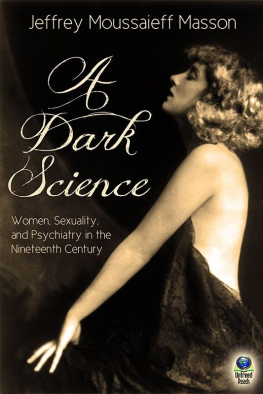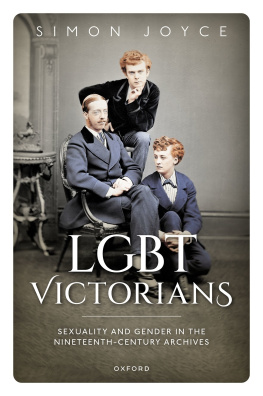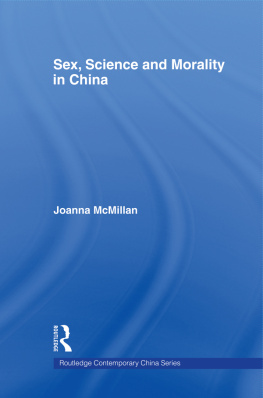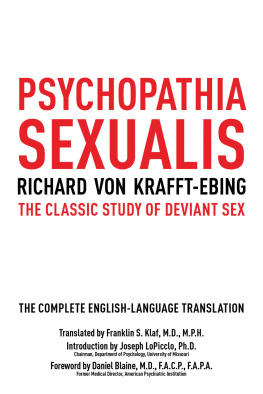2016 by the Board of Trustees
of the University of Illinois
All rights reserved
C 5 4 3 2 1

This book is printed on acid-free paper.
Library of Congress Cataloging-in-Publication Data
Leck, Ralph Matthew, 1961-
Vita sexualis: Karl Ulrichs and the origins of sexual science / Ralph M. Leck.
pages cm
Includes bibliographical references and index.
ISBN 978-0-252-04000-9 (cloth : alk. paper)
ISBN 978-0-252-09818-5 (ebook)
1. HomosexualityResearchGermany. 2. HomosexualityResearch. 3. SexologyGermanyHistory. 4. SexologyHistory. 5. Ulrichs, Karl Heinrich, 1825-1895.
I. Title.
HQ 76.3. G 42 L 43 2016
306.70943dc23 2015029045
To
Nancy Ann Rider
Preface
Post-Victorians and Sexual Science
T he theorists of sexual modernism, Paul Robinson opined in The Modernization of Sex , have never received the serious attention that is regularly lavished on their counterparts in science, social thought, and the arts. For much of his adult life, Ulrichs resisted the Prussianization of culture.
Numa Numantius was no more. Ulrichs now openly embraced the life of a defiant public intellectual.
Authoritative scholars have justifiably portrayed Ulrichs as a pioneer of homosexual rights. Volkmar Sigusch, Germanys leading scholar of sexual science, states definitively that Ulrichs is the most decisive and influential pioneer of homosexual emancipation in world history. These actions bespeak Ulrichss courage to bear witness to social injustice and suffer the consequences. Building on the scholarship of Sigusch, Herbert Kennedy, Manfred Herzer, Wolfram Setz, and others, this study also highlights Ulrichss heroic and often lonely struggle to decriminalize homosexuality, create a more tolerant society, recognize erotic rights, and establish a more inclusive version of political liberalism. Ulrichs produced the blueprint for a post-Victorian or, if you like, post-Prussian sexual culture.
However, the dominant narrative of Ulrichs as a political hero of homosexual rights has constrained our appreciation of his larger cultural significance. Just as feminism represents the emergence of revolutionary legal, moral, and amatory codes that transformed all aspects of Western society, so too Ulrichss sexual modernism represents a radical reconceptualization of human sexuality and one that transformed European societies. The trope of Ulrichs as a gay activist, then, has limited our ability to appreciate his epochal innovations as a social scientist. Ulrichs was the first modern European thinker to propose that a spectrum of cultural and individual variationsnot heterosexuality and the male-female binaryis natural. Behind these variations, he posited, was something shared by all human beings: sexual desire and amatory needs. These two epistemological propositionssexual variety as natural and recognition of the libidinal/amatory sameness behind variationwere a reveille calling humanity to awaken from Victorian science, Prussian jurisprudence, and heterosexist mores. In particular, Ulrichs revolutionized the civic meaning of sexual science by challenging the Victorian-Christian presupposition that only monogamous heterosexuality was normal, natural, and morally defensible. After Ulrichs, the natural-unnatural binary, upon which antihomosexual European law and morality rested, appeared as an irrational denial of an obvious fact of natural history: cultural and individual variability in human sexuality. Far more than previous studies, then, this monograph interprets Ulrichs as the inventor of a new science of sexual heterogeneity. Along with his scientific innovations, his pioneering politics mark him as the first post-Victorian sexual modernist.
While Ulrichss life and works are fulcrums of this study, this book is not a biography but a history of ideas. Examinations of Ulrichss political and scientific innovations are a wedge opening new insights into the history of sexual science, legal systems, and Western amatory codes. are examined at greater length in subsequent chapters.
The nomenclatures they developed are the linguistic medium in which we now communicate. Before they appeared in Kertbenys anti-Prussian essays of 1869, the words Heterosexualitt ( heterosexuality ) and Homosexualitt ( homosexuality ) did not exist. We use these words today in the absence of the knowledge that their invention signaled a post-Prussian liberal sexual politics of inclusion and equal rights. This chapter recaptures the justice-seeking mindset that gave rise to linguistic invention. Long before the linguistic turn in contemporary social theory, Ulrichs and Kertbeny consciously practiced a politics of discourse. Their classificatory neologisms expressed the social ethos of sexual modernism.
Despite their shared civic interests and status as political outliers, they could not agree on the role of discourses of nature in the political fight for a post-Victorian Europe.
The science of Agape defied the erotic orthodoxy of scientia sexualis . This defiance produced epistemological breakthroughs in science and civic morality and contributed mightily to the transformation of patriarchal amatory codes.
The reader will find that one of several dichotomies directs the arc of the narratives found in this monograph. The regulative concept of greatest magnitude is vita sexualis . It is used as shorthand for Ulrichss sexual modernism, which centered around two claims: (1) sexual rights are a social question and, therefore, the science of sexuality is an important field of social ethics and (2) broad knowledge of sexual variety should be presented to the public as a means of promoting a dialogue about legal codes and social mores. According to Ulrichs, sexual diversity and cultural relativism are facts. In light of the empirical fact of sexual variance, the fixed morals of Western Christianity appear arbitrary, habituated, and ethnocentric. As a civic attitude, then, vita sexualis among sexual modernists was associated with the avoidance of classificatory prejudgments about the moral meaning and civic legitimacy of nonheterosexual practices such as cross-dressing, polyamory, masturbation, homosexuality, and public nudity. Moral and civic judgments about sexuality are unavoidable, but sexual modernists believed that broad empirical knowledge of sexual variance should precede such judgments. As we shall see, modernists inductive approach to social morality stood in sharp contrast to the deductive exaltation of heterosexual monogamy found in Christianity and the works of conservative sexologists.
This book articulates the philosophical and cultural differences between modernists and traditional sexologists by way of a distinction between vita sexualis and psychopathia sexualis . In The Sexual Life of Our Time in Relation to Culture (1907), the Berlin sexologist Iwan Bloch defined the great field of so-called psychopathia sexualis as a scholarly fascination with sexual aberrations, degenerations, anomalies, perversities, and perversions. The term psychopathia sexualis dates to the early nineteenth century, but scholars generally associated it with Richard von Krafft-Ebings canonical Pychopathia Sexualis (1886). Krafft-Ebing used psychopathia sexualis as an organizing principle for explaining the legal, moral, and scientific meanings of erotic heterogeneity. Through the use of this term, he essentially secularized long-standing theological orthodoxies. He did this by criminalizing and pathologizing sexual behaviors that, from the perspective of compulsory heterosexuality, were aberrant and abnormal. As a regulative concept of scientific explanation, then, psychopathia sexualis expressed a largely conservative and censorial Victorian attitude toward sexual variance and one that affirmed dominant heterosexual and religious mores.









 This book is printed on acid-free paper.
This book is printed on acid-free paper.